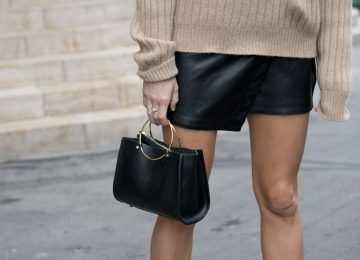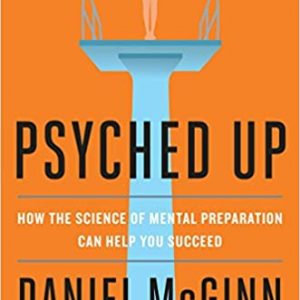Abstract
This article explores how fashion design—an activity that fundamentally weaves together the practices, skills, and materials associated with clothing the body—can begin to weave together people in places. I reflect on collaborative encounters emerging from participatory design practice to consider how fashion-related activity might recognize and inspire deeper relational connections between people, and between people and their environment. I explore the role of the designer as host: one capable of creating conditions that lead to interactive movement among people and dialogue that expresses and explores intent. The designer as host activities of the action research project described here—I Stood Up in Chrisp Street—demonstrate fashion design’s capacity to inform not only localized sustainability practices, but also Fashion and Design for Sustainability research, education, and business practice.

Introduction
The domain of this research is in the emerging field of Fashion Design for Sustainability. Its purpose is to find ways that fashion-related activities can recognize communities-in-place and inspire relational connections between people and between people and their environment. Here I employ a broad definition of fashion derived from a variety of sources: the action or process of making1 with reference to attire; a particular cut or style.2 In a contemporary setting, fashion becomes the product of activities—“which are industrial, economic, cultural, and aesthetic”3—and represents the “tastes and concerns of all social groups.”4 Hence, fashion encompasses the design, making, marketing, buying, wearing, caring, and end of life of clothing—garments and other items worn on the body.
The field of fashion design research is relatively young.5 Fashion education is a little older; one of its earliest institutions was the London College of Fashion, where this research is based. Established in 1906, early photographs of its skills-based teaching and learning feature men sitting crossed-legged on top of tables, intently engaged in the cutting and stitching together of pieces of material with needle and thread. This technique of garment construction is still fashion’s most typical practice, albeit with the aid of cutting and sewing machines. However, fashion students are now predominantly female. Fashion design education has changed considerably in other respects. Educators also place emphasis on clothing construction and fitting, and teach commercial and technological elements of production and consumption, usually relating to fashion at industrial scale.6 Meanwhile, the impacts of fashion’s industrial activity have increased exponentially in economic, social, ecological, and cultural terms. Social scientists are making important contributions to fashion research that relate to some of these impacts in cultural studies, including Agnes Rocamora’s discussion of fast fashion7 and Joanne Entwhistle’s situating of the dressed body in the social world.8 Researchers such as Kate Fletcher9 and Sandy Black10 are expanding the study of fashion and sustainability in holistic terms and in relation to fashion technology and business, but there is a paucity of action research into the role and methods of fashion design for sustainability that can counteract these swelling impacts.
This research, as part of Cultures of Resilience11 project, draws on methods applied in earlier participatory fashion design research carried out in Ahmedabad, India, where UK and India-based researchers, designers, and a photographer captured connections between place, self, and clothing in an increasingly socially divided and environmentally depleted urban location. Outcomes were exhibited at the Unbox Future Cities Festival, and the researchers’ findings published.12 I based the title of the exhibition on a simple and profound response to a question I had asked to an Ahmedabad resident about her attire: “I wear my culture.” These four words simultaneously describe the personal and wider societal nature of fashion. Christopher Breward describes the practical and rational elements of garment making and wearing, and their representative messages, as “a site for the production of objects and beliefs, an event both spectacular and mundane, cyclical in its adherence to natural and the commercial seasons.”13 Fashion garments are born out of nature and community; they always and only exist via these elements.
Defining Fashion as Inside-Out and Outside-In

Fashion involves an active interplay between an expressive intent and all that goes into making clothes. This interplay is not always apparent. People often think of fashion pieces as inert, manufactured objects made of individual parts. While each component affects the world, people think of these parts as inactive. Fashion’s value is often assessed only in relation to the market, while its contents, relationships, and costs and benefits spread far beyond. In terms of the sustainable or unsustainable aspects of the fashion system, it is more accurate to think of the system as a network of related elements that have systematic impact as they work together. Fashion’s social, economic, environmental, and cultural materials and actions are worn on the body as both inside-out and outside-in.
Our clothing is part of a reciprocal process in our search for meaning, belonging, and recognition. It is a way to tell others how we feel about ourselves, relative to a time and place. It is about fitting in, or standing out, or both. Richard Sennett describes clothes, when worn and seen, as “guides to the authentic self of the wearer.”This powerful form of self-expression affords fashion designers a role beyond the creation of clothes with market value as the creators of these guides. Such is the inside-out of fashion.
At the same time, fashion plays a role in prevailing customs, acceptable socio-economic practice, and production and consumption methods. It is endorsed by influencers, and can be a visible descriptor of place and time. All of these instances are examples of the outside-in of design. The fashion industry, a huge intercontinental system, draws directly and significantly on nature’s materials and human labor to materialize its elements. Its designers are tastemakers and spotters; they capture opportunities to present the zeitgeist. They are skilled in all that goes into the physical matter-making that brings the outside in.
All that goes into the meaning-making of the inside-out is not always as apparent or recognized in the designer’s role. In recognizing this reciprocal process, we might detect a dichotomy between a representation of our cares, needs, hopes, and aspirations (inside-out) and the commoditization of style (outside-in) that contributes to the fragility of our social and ecological systems. When viewed as an expression of intent—meaning-making—plus all that goes into the making of clothes to wear—matter-making—the scope of fashion design extends and its remit expands.
In order to advance any subject in design, one has to “engage in the activity of designing.”15 The research I describe here takes place in what Ezio Manzini calls “design mode” and thus combines “three human gifts: critical sense, … creativity, … and practical sense.”16 The application of design mode to fashion-related methods and activities, with a range of participants, and with the intention of creating a connection between nature, community and self, is an exploration of how fashion design for sustainability activities can recognize communities of place.

When engaging critical senses by reflecting on fashion as a means to express intention and to absorb the world, making is useful as a tool to experiment with one’s ideas. For design to be engaging, however, “it must be cultivated”17 and this is where the interplay between critical thinking, creativity, and practical making come into play. John Ehrenfeld extends the role of design beyond its recognized aesthetic and functional product specification into “a conscious, deliberate effort to change the systemic presuppositions—[the] beliefs and normal practices…—underlying action so that the desired end may be attained.”18 Thus, fashion design can be considered in terms of its interactions with nature, the social relationships it enables that foster a sense of community, and the stuff of personal reflection enabling a search for and communication of the self. This is exciting and daunting for fashion designers; it opens a Pandora’s box and a wealth of responsibilities and opportunities. This expanded role provides fashion designers with opportunities for creative possibilities that respond to humanity’s most critical environmental, social, and cultural sustainability challenges.

















